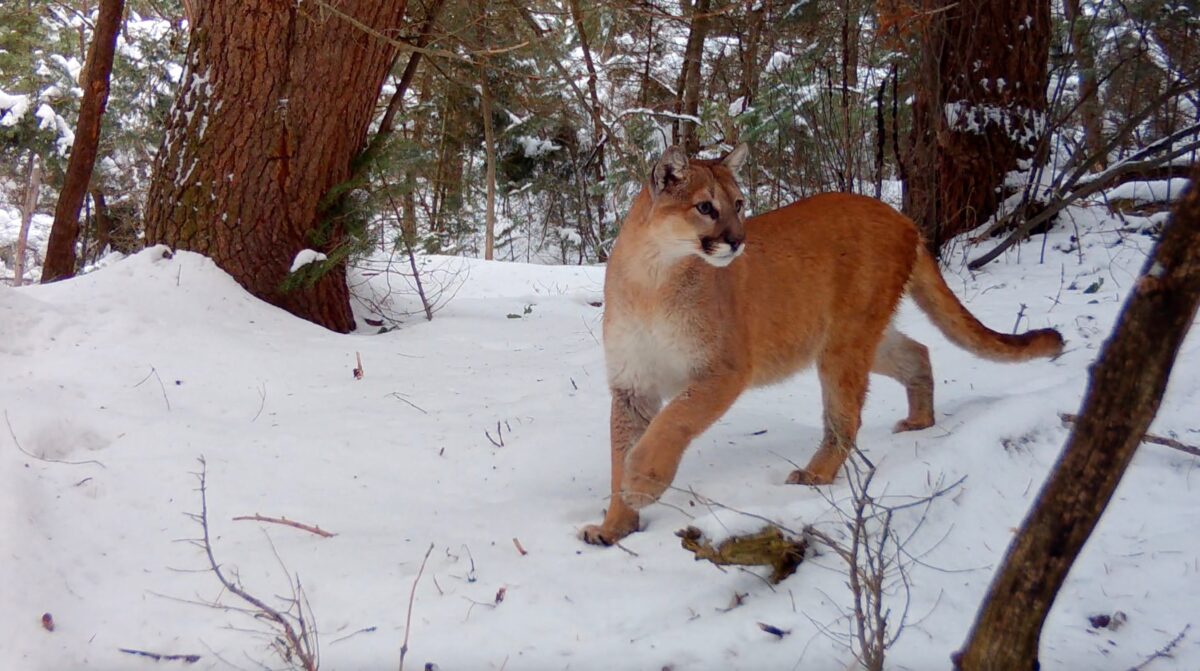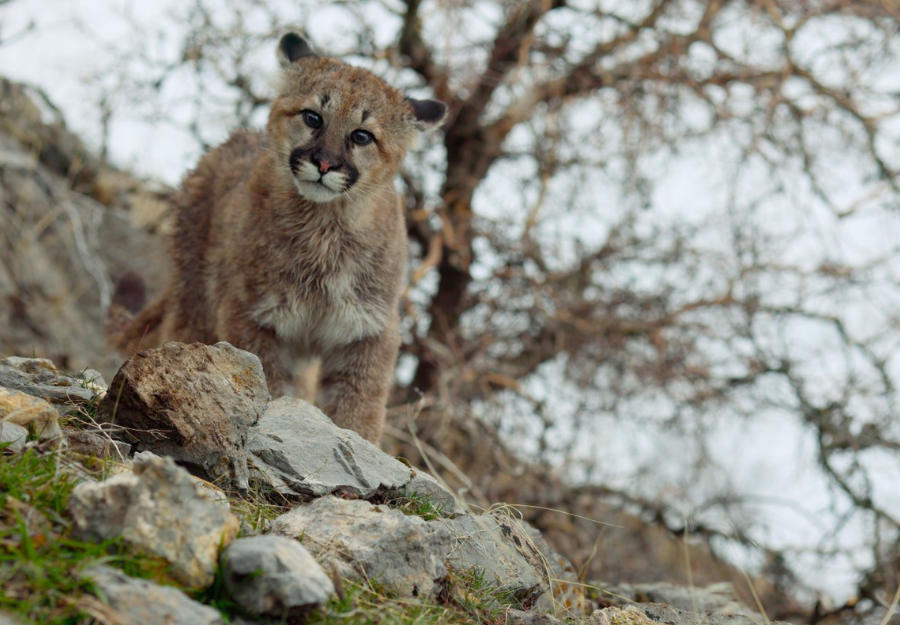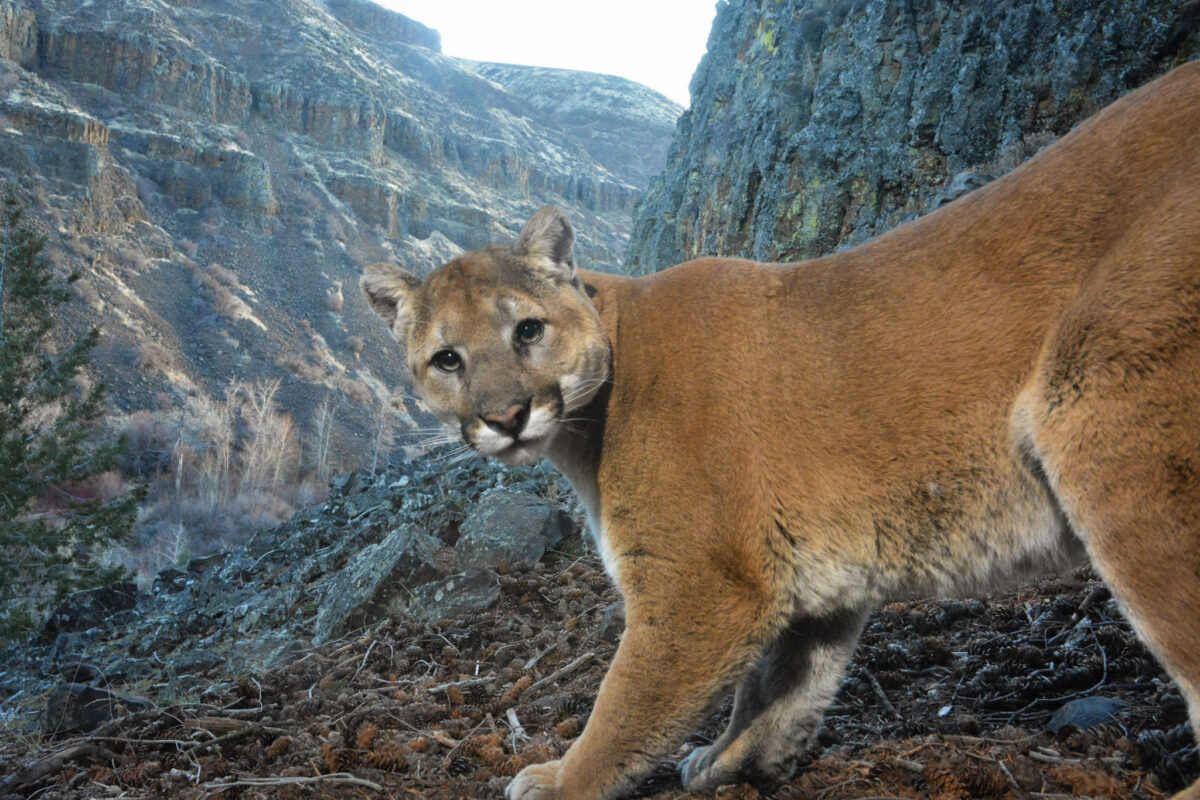A reflection from the Mountain Lion Foundation’s first Coexistence Camp
By Lin Due, Coexistence Ambassador
Spirit animal. Ghost cat. Apex predator. Loner. Marauder. Protector of the North.
Puma concolor has more names than any other animal in the Americas: mountain lion, puma, catamount, cougar, panther. Those identifiers signify the space mountain lions inhabit in our psyches. We revere and fear and admire them. We write books about years spent trying to see them. They inform our travels through life. And some of us make spiritual journeys to them, drums beating hypnotically in the background.
They come to us in dreams. I once followed a mountain lion and a polar bear through downtown Berkeley. The animals prowled up streets, past stores, weaving through crowds of people effortlessly as I trailed behind. When the mountain lion crossed Oxford Street into the UC Berkeley campus, the polar bear disappeared. Mountain lions take precedence over even a fearsome polar bear.
But mountain lions are something else: flesh and blood animals living perilous existences in the wild. They are often blamed for kills of livestock and pets when the neighbor’s dog is a more likely culprit; they are shot from trees simply because someone spots them crouching in the branches. Like Greta Garbo, they just want to be alone, but they inevitably attract a crowd, some equipped with firearms.
Mountain lions are silent. They would always win at hide-and-seek. Many of us, even those desperate to see one, have been within yards of a mountain lion without realizing it. It is possible to live safely and comfortably with lions; we’ve done it for millennia. If we are to do it for millennia more, we need to learn to see what’s real. This was the purpose of the Mountain Lion Foundation’s Coexistence Camp, held on California’s Mendocino coast over the glorious weekend of August 12-13, 2023.
The host farm sits on the east side of Highway 1, overlooking the ocean. The land sports sheep, chickens, ducks, dogs, fruit trees and high tunnels filled with vegetables. Ospreys circled overhead as we sat down at long tables in the sun. About twenty strong, we came from all over the West: California, Oregon, Washington, Colorado, Utah and Texas. We had applied for a pilot program to train coexistence ambassadors.
A very pregnant Gowan Batist, who is the Mountain Lion Foundation’s coexistence programs manager and a Fortunate Farm steward, pointed out that coexistence benefits more than lions. The livestock, pets, and produce on their farm attract not just mountain lions, but also bears, raccoons, foxes, opossums and more. Yet due to good management practices, the farm has lost no animals for years.
I used to lecture at county and state fairs about how to safely house poultry. It astounded me how often people would blame the skunk that got into the pen rather than their slapdash excuse for a coop. How does one advocate for sane practices? Not by preaching.
“You need to support people where they’re at,” said Brent Lyles, the foundation’s executive director. “You need to be part of the journey communities are taking.”
Batist puts this into practice on Fortunate Farm. Neighbors call her to examine a kill. Was this the mountain lion someone had seen a week ago? Batist explained that her role is to observe and tell a story that fits the observations. A deer with trauma to the neck and head, an open abdominal cavity with no organs is likely a lion kill. Lions are precise surgeons; they remove the organs, which they may not eat. The kill may be stashed under leaves and grass. Bears are sloppier; they tend to kick dirt on a carcass and eat the organs. Coyotes are messier still, leaving feces around an unburied kill, eating everything and anything. Dogs may leave a similar chaos of scattered pieces yet eat nothing, instead ripping randomly at the victim’s fur or fleece. Those who lose animals are often disappointed to discover the villain is the neighbor’s dog. An unpleasant conversation must follow; it’s simpler if a wild animal is at fault.
Our group spent much of the weekend examining deterrents. We constructed a compound encircled by a solar-powered electric fence. We talked about livestock guardian dogs—their plusses and minuses. We handled battery- or solar-powered lights that flashed, alarms that emitted a high frequency whine or one so grating that everyone at the table cringed, banging their palms over their ears. We discussed putting talk radio shows on a timer, moving lights around, the tactic of going hard with multiple deterrents for a short period of time to convince an animal to move elsewhere. Wild animals do not want to hear human voices, be bathed in flashing lights, or spooked by alarms. Family dogs are habituated to these things. If an animal keeps coming, that unpleasant conversation may be close at hand.
Our paradisiacal weekend was overshadowed by the catastrophe on Maui. Several of the farm’s stewards are native Hawaiians. Pathos and reverence chased each other through morning chants. Since that weekend, fires scorched drought-stricken Louisiana during a time when deluges are common; thousands of downy Emperor penguin chicks drowned when an ice sheet collapsed; fires in Canada decimated vast stretches of forest and prairies.
We live with bliss and joy and dread. We stand on the precipice of consciousness of our communal journey with all creatures. That journey informs us in mundane ways (don’t leave out garbage that attracts bears) while at the same time limning the connections that exist between every living thing.
When we seek to coexist with predators, to adapt to their natures rather than trying to impose ours, we begin a dialogue. We need to connect, through a solar fence, hypnotic drumming, or listening with empathy to a neighbor struggling with anger and fear.
 Lions live in our psyches. We need to make room in our hearts not just for lions but for all of life.
Lions live in our psyches. We need to make room in our hearts not just for lions but for all of life.
About the Author
Lin Due is an editor and writer who divides time between Berkeley and Mendocino County’s Laytonville.



 Facebook
Facebook Twitter
Twitter Send Email
Send Email


